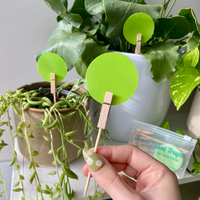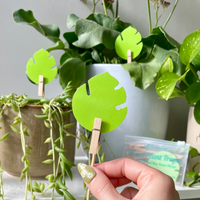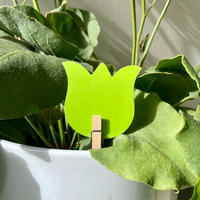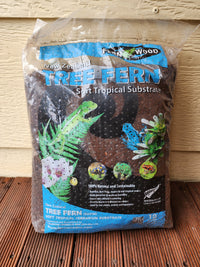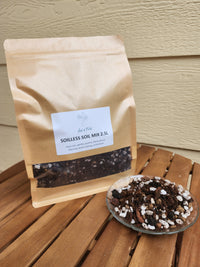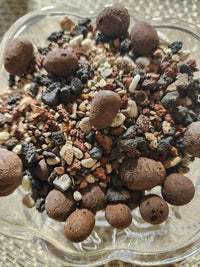Gardeners across Australia know how unpredictable weather and poor soil structure can hinder plant growth. Coco coir soilless mix offers a lightweight, renewable substrate that solves water retention, aeration and pH challenges in one sustainable package. In this guide, you’ll discover:
- The key benefits of coco coir soilless mix in Australian gardens
- Practical methods to rehydrate and mix coco coir for potted plants, garden beds and hydroponics
- A comparison with peat moss to highlight environmental and performance advantages
- Local sourcing tips and product-selection criteria for buying quality coco coir
- Answers to common questions about compatibility, disease prevention, reuse and pH range
Explore how Leaf of Faith’s premium coco coir soilless mix can transform your gardening experience and lead you to healthier, more resilient plants.
What Are the Key Benefits of Using Coco Coir Soilless Mix in Australian Gardens?
Coco coir soilless mix is a growing medium made from coconut husk fibres that retains moisture while allowing oxygen to reach roots. Because it is pH neutral and renewable, it addresses common Australian soil issues like compaction and alkalinity. Modern gardeners benefit from reduced watering frequency, enhanced root health and a lighter environmental footprint.
How Does Coco Coir Improve Water Retention for Australian Plants?
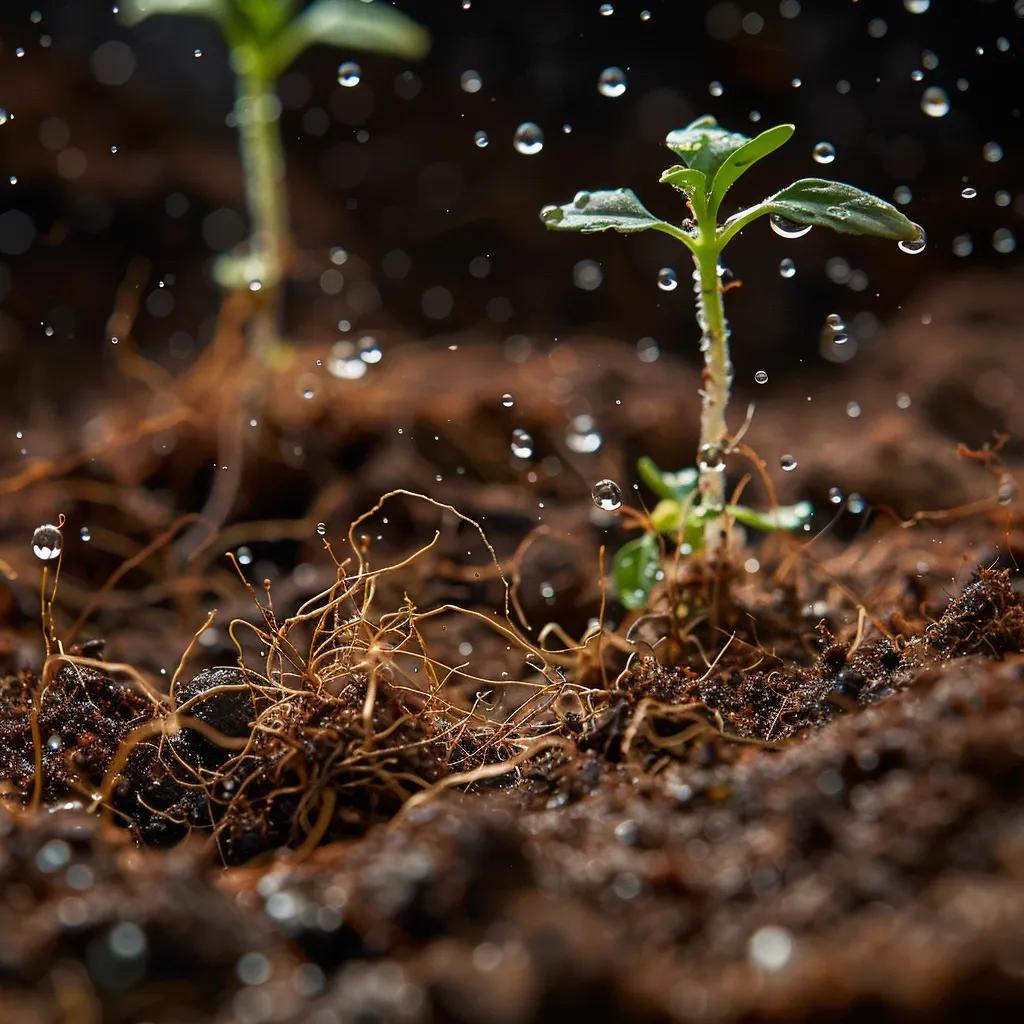
Coco coir retains water through its porous fibre structure, which holds moisture and releases it slowly to plant roots.
- High moisture capacity that soaks up to 10 times its weight in water
- Slow-release hydration reduces watering cycles in hot, dry climates.
- Uniform moisture distribution prevents dry pockets and waterlogging
Coco Coir and Water Retention
Coco coir's porous structure allows it to absorb and retain significant amounts of water, which is then slowly released to plant roots. This characteristic is particularly beneficial in hot, dry climates, reducing the frequency of watering and preventing dry pockets within the growing medium.
These properties help your shrubs, vegetables, and ornamentals thrive between watering sessions and lead naturally into better root aeration.
Why Is Aeration Important and How Does Coco Coir Enhance It?
Aeration supplies oxygen to roots, supporting nutrient uptake and preventing anaerobic conditions. Coco coir’s coarse fibres create micro-air pockets that maintain consistent airflow.
- Improved root respiration for stronger, more fibrous root systems
- Reduced compaction compared with garden soil or peat moss
- Enhanced drainage that lowers the risk of waterlogging
Aeration and Root Health
The coarse fibres in coco coir create micro-air pockets, which are essential for root respiration and overall plant health. This enhanced aeration promotes stronger root systems, reduces compaction, and improves drainage, thereby lowering the risk of waterlogging and root diseases.
Healthy roots with ample oxygen pave the way for optimal pH balance and microbial activity.
What Makes Coco Coir pH Neutral and Why Is This Ideal for Plants?
Coco coir naturally buffers pH around 5.5–6.5 without chemical adjustment. This neutrality ensures nutrient availability across a broad range of crops. Plants encounter fewer nutrient lockouts, and gardeners save time by avoiding frequent pH corrections.
How Does Coco Coir Support Sustainable and Eco-Friendly Gardening in Australia?
As a byproduct of coconut processing, coco coir is a renewable alternative to non-renewable peat moss. Its reusability and minimal processing reduce waste and carbon footprint.
- Renewable resource sourced from coconut husks instead of peat bogs
- Biodegradable and safe to compost or recycle
- Lighter transport weight lowers shipping emissions
By choosing coco coir soilless mix, gardeners contribute to a circular, eco-conscious horticulture.
How Can Modern Gardeners Use Coco Coir Soilless Mix Effectively?
Coco coir soilless mix becomes ready-to-use once rehydrated, blended and integrated into growing systems. Following proper rehydration and mixing steps ensures maximal water retention, aeration and nutrient uptake for any application.
What Is the Best Way to Rehydrate Coco Coir Bricks for Gardening?
To transform a compact brick into loose grow-media, follow these steps:
- Place the coco coir brick in a large container.
- Add four to five litres of warm water and wait 10–15 minutes.
- Break the expanded mass into smaller chunks with a fork.
- Rinse briefly to remove excess salts, then drain.
Rehydrated coco coir is ready for mixing, leading directly into potting and bed preparations.
How to Mix Coco Coir for Potting and Garden Beds?
For container plants and raised beds, blend ingredients as follows:
- 70% rehydrated coco coir
- 20% perlite or horticultural pumice
- 10% organic compost
- A balanced slow-release fertiliser
This mix provides a lightweight, nutrient-rich environment with ideal drainage and moisture retention.
Can Coco Coir Be Used in Hydroponic Systems in Australia?
Yes, coco coir is prized in hydroponics for stability, sterility and moisture control. It holds water efficiently while allowing excess to drain, preventing root hypoxia. Many growers combine coco coir with perlite or clay pebbles for tailored oxygen-to-water ratios.
How Does Coco Coir Benefit Seed Starting and Indoor Plants?
Coco coir’s fine pith and consistent texture support delicate seedlings and houseplants by:
- Providing sterile medium free of pathogens
- Ensuring uniform moisture that promotes even germination
- Reducing transplant shock through gentle root development
Strong seedlings lead to healthier transplants and robust indoor foliage.
How Does Coco Coir Compare to Other Growing Media Like Peat Moss?
While peat moss has been a staple, coco coir surpasses it on water retention, aeration and sustainability. Gardeners seeking high-performance soilless mixes often switch to coco coir for superior long-term results.
What Are the Environmental Advantages of Coco Coir Over Peat Moss?
Coco coir’s renewability and lower carbon footprint make it an eco-friendly choice compared with extracted peat bogs.
- Reduces peat bog depletion
- Recycles agricultural waste
- Emits fewer greenhouse gases during production
These advantages align with responsible gardening practices.
How Do Water Retention and Aeration Differ Between Coco Coir and Peat Moss?
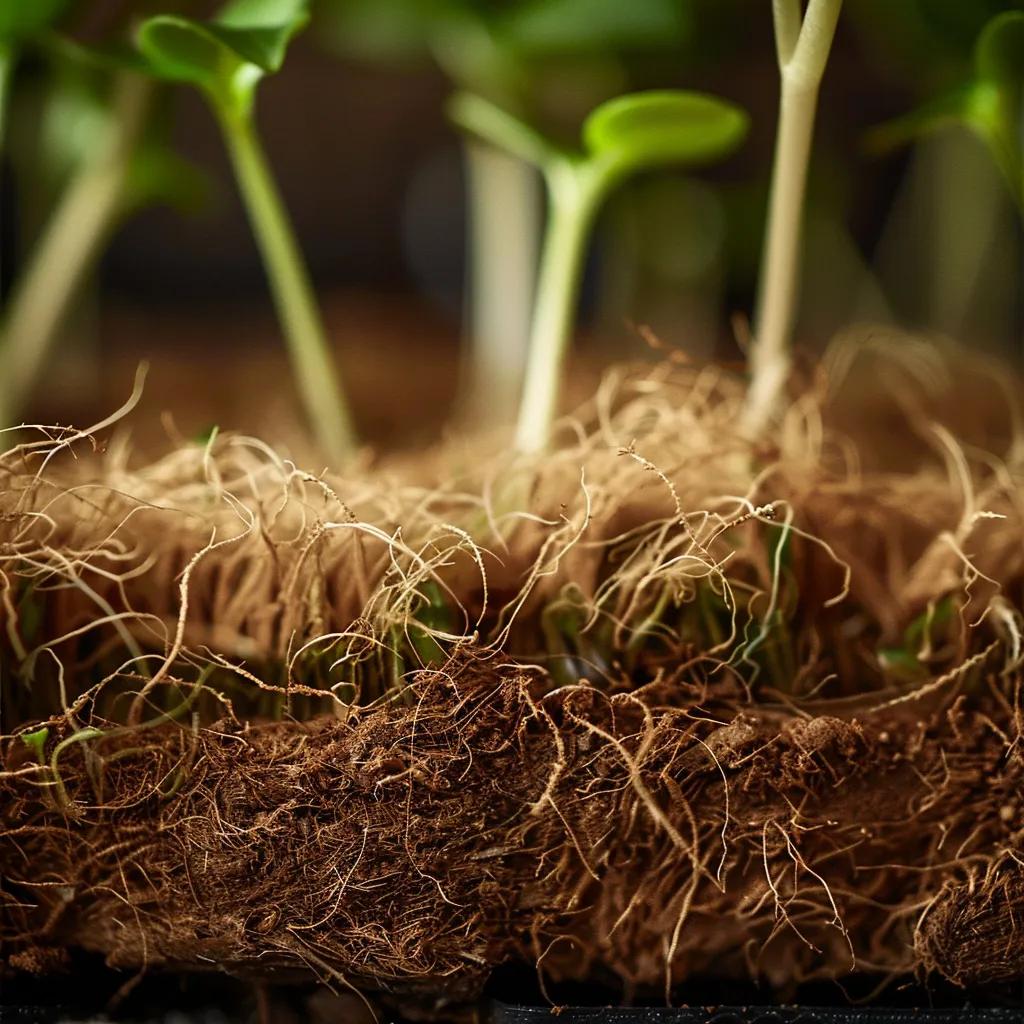
Below is a comparative overview of their key properties:
| Product | Water Retention | Aeration |
|---|---|---|
| Coco Coir | Holds 8–10× its weight | 30–40% air porosity |
| Peat Moss | Holds 4–6× its weight | 10–20% air porosity |
Coco coir’s higher porosity and moisture capacity deliver a balanced root environment that peat moss cannot match.
Which Growing Medium Is Better for Australian Garden Conditions?
For hot, dry climates with erratic rainfall, coco coir outperforms peat moss by maintaining consistent moisture and airflow. Its neutral pH and sustainable origin also suit the diverse needs of Australian gardeners.
Where Can Australian Gardeners Buy Quality Coco Coir Soilless Mix?
Finding reliable suppliers ensures you receive clean, salt-balanced coco coir soilless mix for best results.
What Are the Best Local Suppliers of Coco Coir in Australia?
Leading sources include:
- Leaf of Faith leafoffaithsa.com.au for premium, washed and buffered coco coir bricks and bags.
- Select garden centres stocking reputable brands.
- Hydroponic specialty retailers offering bulk and small-batch options
Choosing a trusted supplier guarantees consistent quality and support.
Are There Bulk Purchase Options for Coco Coir in Australia?
Yes. Many wholesalers and hydroponic stores offer bulk coco coir bricks or loose mixes in 40L–70L formats, reducing per-litre cost and packaging waste for large gardens and commercial growers.
How to Choose the Right Coco Coir Product for Your Gardening Needs?
Consider:
- Format: brick, block or loose
- Grade: fine pith for seedlings, fibre/chunks for drainage
- Buffering: pre-washed with calcium and magnesium to stabilise pH
- Certification: organic or salt-tested for safe use
Matching product attributes to your project ensures optimal performance and plant health.
What Common Questions Do Australian Gardeners Have About Coco Coir?
Understanding key concerns helps gardeners adopt coco coir with confidence.
Is Coco Coir Suitable for All Types of Plants in Australia?
Yes, coco coir supports vegetables, ornamentals, herbs, succulents and native specimens by providing a neutral, well-draining medium that suits diverse root structures.
How Does Coco Coir Help Prevent Root Diseases Like Root Rot?
By balancing water retention and aeration, coco coir prevents waterlogging and hypoxia that lead to root rot. This stable environment suppresses anaerobic pathogens and promotes healthy microbial activity.
Can Coco Coir Be Reused and How Long Does It Last?
Coco coir can be reused for 2–3 growing cycles. Re-sterilise with a mild bleach rinse, rehydrate and re-buffer to extend its usable life and reduce waste.
What Is the Ideal pH Range for Using Coco Coir in Australian Gardens?
Aim for a pH of 5.5–6.5. This range ensures optimal nutrient uptake and aligns with most houseplants, vegetables and native species.
Healthy gardens begin with the right foundation. By choosing Leaf of Faith’s coco coir soilless mix, you gain a versatile, eco-friendly substrate that simplifies watering, enhances root health and supports a wide range of plants. Explore our full range of premium coco coir products at leafoffaithsa.com.au and give your garden the boost it deserves.


